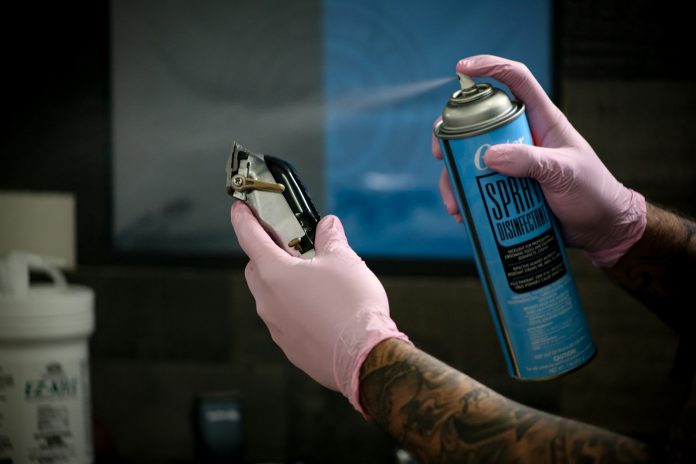Introduction
Tattooing is an ancient art form that has evolved into a modern cultural phenomenon. Whether you’re a beginner interested in exploring the art of tattooing or a seasoned professional looking to upgrade your tools, a good tattoo kit is essential. This comprehensive guide covers everything you need to know about tattoo kits, from understanding the basics to selecting the right equipment and maintaining your tools for long-lasting use.
Understanding Tattoo Kits
What Is a Tattoo Kit?
A tattoo kit is a collection of tools and supplies that a tattoo artist uses to create tattoos. These kits range from basic sets for beginners to advanced kits for professional artists. Typically, a tattoo kit includes tattoo machines (both liner and shader), power supplies, needles, inks, and various other accessories like grips, gloves, and practice skins. The quality and completeness of a tattoo kit can greatly impact the ease and quality of your tattooing experience.
Types of Tattoo Kits
Tattoo kits can be broadly categorized into three types: beginner kits, intermediate kits, and professional kits.
- Beginner Kits: Designed for novices, these kits usually contain all the basic equipment needed to start tattooing, including instructional materials. They are affordable and easy to use but may not offer the durability or precision required for more complex work.
- Intermediate Kits: Aimed at those with some tattooing experience, these kits provide better quality machines and a broader selection of needles and inks. They are ideal for artists looking to improve their skills and start working on more detailed tattoos.
- Professional Kits: These kits are used by experienced tattoo artists and include high-quality machines, a wide variety of needles, premium inks, and advanced accessories. Professional kits offer the precision and reliability needed for complex designs and long tattooing sessions.
Essential Components of a Tattoo Kit
A good tattoo kit should contain the following essential components:
- Tattoo Machines: Often referred to as tattoo guns, these are the primary tools for creating tattoos. Most kits include both a liner and a shader machine.
- Power Supply: This device provides the necessary power to the tattoo machine. A stable and adjustable power supply is crucial for consistent performance.
- Needles: Tattoo needles come in various sizes and configurations, such as round liners, shaders, and magnums, each serving a specific purpose.
- Tattoo Inks: High-quality inks are essential for creating vibrant, long-lasting tattoos. Kits usually include a selection of basic colors.
- Grips, Tubes, and Tips: These components help the artist hold the machine comfortably and guide the needle during the tattooing process.
- Practice Skin: Beginners can practice their skills on synthetic skin before tattooing real clients.
- Gloves and Cleaning Supplies: Hygiene is crucial in tattooing, so kits often include gloves, alcohol pads, and other cleaning supplies.
How to Choose the Right Tattoo Kit
Consider Your Skill Level
When choosing a tattoo kit, it’s important to consider your experience level. Beginners should look for kits that are user-friendly, come with instructional guides, and include all the necessary tools to get started. Intermediate and professional artists should focus on kits that offer higher quality machines, a wider variety of needles, and premium inks.
Quality of Tattoo Machines
The tattoo machine is the most critical component of a tattoo kit. Look for machines made from durable materials like stainless steel or aluminum, which offer better performance and longevity. The weight and balance of the machine also matter, as a well-balanced machine reduces hand fatigue during long sessions.
Variety of Needles
A good tattoo kit should include a variety of needles to accommodate different tattooing techniques. Beginners may start with basic liner and shader needles, while more experienced artists might need magnum needles for shading large areas or round shaders for softer lines.
Ink Quality
Tattoo ink quality can vary significantly, and using low-quality ink can result in faded or discolored tattoos. It’s advisable to choose kits that include inks from reputable brands known for their safety, consistency, and vibrant colors.
Accessories and Extras
Additional accessories like grips, foot pedals, clip cords, and transfer paper can enhance the tattooing experience. Check the kit for these extras, as they can save you money and ensure you have everything you need to start tattooing immediately.
Budget Considerations
Tattoo kits are available in a wide price range. While it might be tempting to go for the cheapest option, investing in a quality kit can make a significant difference in your tattooing results and overall experience. However, for beginners, starting with a mid-range kit might be the best option until you gain more experience.
Step-by-Step Guide to Setting Up Your Tattoo Kit
Unboxing and Inspecting Your Kit
When you receive your tattoo kit, the first step is to unbox and inspect all components to ensure nothing is missing or damaged. Check the condition of the tattoo machines, power supply, needles, inks, and all accessories. If any items are missing or defective, contact the supplier for replacements.
Setting Up the Tattoo Machine
- Attach the Needle: Carefully insert the needle into the tube, ensuring it is secure and properly aligned. The needle should extend just slightly from the tube when the machine is powered off.
- Connect the Machine to the Power Supply: Attach the clip cord to the machine and plug it into the power supply. Make sure the connections are secure.
- Adjust the Power Settings: Turn on the power supply and adjust the voltage according to the type of work you’ll be doing. Lining typically requires a higher voltage, while shading can be done with a lower setting.
- Test the Machine: Press the foot pedal to start the machine. Ensure it runs smoothly without excessive noise or vibration.
Preparing the Work Area
- Clean and Disinfect: Before starting any tattoo work, thoroughly clean and disinfect your work area. This includes wiping down surfaces and setting up a sterile environment.
- Organize Your Supplies: Arrange your inks, needles, and other supplies in an easily accessible manner. Lay out your gloves, paper towels, and other hygiene products.
- Set Up the Practice Skin: If you’re a beginner, set up the practice skin on a flat surface where you can comfortably work on it.
Tattooing Practice
- Practice on Paper: Before using the tattoo machine, practice your designs on paper. This helps you get a feel for the shapes and lines you’ll be creating.
- Practice on Synthetic Skin: Once you’re comfortable with your designs, move on to the synthetic practice skin. Focus on controlling the machine’s depth and consistency.
- Review and Improve: After each practice session, review your work. Identify areas where you need to improve and continue practicing until you feel confident.
Tattooing on Real Skin
- Prepare the Client’s Skin: Clean the area to be tattooed with an antiseptic solution. Shave the area if necessary and apply a stencil of the design.
- Begin Tattooing: Start with the outline, using the liner machine. Move steadily and avoid pressing too hard to prevent skin damage.
- Shading and Coloring: After completing the outline, switch to the shader machine for shading and coloring. Use smooth, consistent movements to ensure even application.
- Final Touches: Once the tattoo is complete, clean the area and apply an appropriate aftercare ointment.
Maintaining Your Tattoo Kit
Cleaning and Sterilization
Hygiene is paramount in tattooing. Proper cleaning and sterilization of your equipment prevent infections and ensure the longevity of your tools.
- Disassemble the Machine: After each session, disassemble the tattoo machine, removing the needles and grips.
- Clean the Components: Use a disinfectant solution to clean the machine, grips, and tubes. Avoid using water directly on the machine’s motor or electrical parts.
- Sterilize the Needles and Tubes: Sterilize reusable needles and tubes using an autoclave. Single-use needles should be disposed of properly.
- Store Equipment Safely: Store your clean and sterilized equipment in a dry, sterile environment. Use protective cases to prevent damage and contamination.
Routine Maintenance
- Lubricate Moving Parts: Regularly lubricate the moving parts of your tattoo machine to keep it running smoothly.
- Check Power Supply and Cords: Inspect the power supply and cords for any signs of wear or damage. Replace faulty components immediately.
- Replace Worn Components: Over time, components like needles, grips, and tips will wear out. Replace them regularly to maintain optimal performance.
Upgrading and Expanding Your Kit
As you gain more experience, you might find the need to upgrade or expand your tattoo kit. Consider adding more advanced machines, a wider range of needles, and specialty inks to your collection.
Tattoo Aftercare: Ensuring the Best Results
Immediate Post-Tattoo Care
After completing a tattoo, proper aftercare is crucial to prevent infection and ensure the tattoo heals properly.
- Clean the Area: Gently clean the tattooed area with a mild, fragrance-free soap and water.
- Apply a Healing Ointment: Apply a thin layer of a recommended aftercare ointment or moisturizer to keep the area hydrated.
- Cover with a Bandage: Cover the tattoo with a sterile bandage or plastic wrap to protect it from bacteria and dirt.
Long-Term Care
- Avoid Sun Exposure: Protect the tattoo from direct sunlight, as UV rays can fade the ink.
- Moisturize Regularly: Keep the tattooed area moisturized with a fragrance-free lotion to prevent dryness and cracking.
- Avoid Scratching or Picking: As the tattoo heals, it may itch or form scabs. Avoid scratching or picking at the scabs to prevent scarring and ink loss.
- Stay Hydrated and Healthy: Maintaining good hydration and overall health supports faster healing and better tattoo outcomes.
Recognizing Signs of Infection
If the tattooed area becomes excessively red, swollen, or painful, or if you notice pus or other signs of infection, seek medical advice immediately.
Common Mistakes to Avoid When Using a Tattoo Kit
Skipping Practice
One of the biggest mistakes beginners make is skipping the practice stage. Tattooing requires a steady hand and an understanding of depth and pressure. Practicing on synthetic skin or other non-human surfaces helps build confidence and skill.
Using Low-Quality Inks
Using low-quality inks can result in poor tattoo outcomes, such as fading, discoloration, or allergic reactions. Always choose high-quality, reputable ink brands.
Improper Sterilization
Failure to properly sterilize your equipment can lead to infections and other serious health issues. Always follow strict sterilization procedures and use disposable needles when possible.
Tattooing Without Proper Knowledge
Attempting to tattoo without sufficient knowledge of techniques, equipment, and skin anatomy can result in unsatisfactory tattoos and potential harm to the client. Educate yourself thoroughly before attempting to tattoo.
Ignoring Client Aftercare
Providing your client with aftercare instructions is just as important as the tattoo itself. Proper aftercare ensures the tattoo heals well and maintains its quality over time.
Tattoo Kit FAQs
1. What should a beginner look for in a tattoo kit?
Beginners should look for a tattoo kit that includes all the basic tools needed to start tattooing, such as a liner and shader machine, a power supply, a variety of needles, basic ink colors, practice skin, and instructional guides. The kit should be user-friendly and come from a reputable supplier.
2. Can I upgrade my tattoo kit over time?
Yes, as you gain more experience, you can upgrade your tattoo kit by purchasing higher-quality machines, a wider range of needles, and premium inks. You can also add specialty equipment like rotary machines or advanced power supplies to enhance your capabilities.
3. How do I maintain and clean my tattoo kit?
Maintaining your tattoo kit involves regular cleaning and sterilization of all components. Disassemble the machine after each use, clean all parts with a disinfectant solution, and sterilize reusable needles and tubes. Store your equipment in a clean, dry place to prevent contamination.
4. What types of tattoo machines are included in most kits?
Most tattoo kits include two types of machines: a liner machine for creating outlines and a shader machine for shading and coloring. Some advanced kits may also include rotary machines, which are versatile and can be used for both lining and shading.
5. Is it safe to use a tattoo kit at home?
Tattooing at home can be safe if you follow strict hygiene practices, use high-quality equipment, and educate yourself on proper techniques. However, it’s recommended that beginners start with practice skin and seek professional guidance before tattooing real skin.
Conclusion
A well-chosen tattoo kit is the foundation of a successful tattooing experience, whether you’re a beginner learning the ropes or a professional honing your craft. By understanding the components, selecting the right kit for your needs, and maintaining your equipment properly, you can ensure that your tattooing endeavors are both safe and rewarding. As you progress, remember that continuous learning and practice are key to mastering the art of tattooing.



